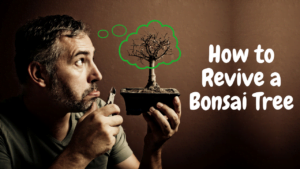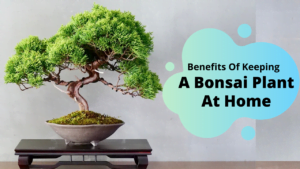Do you know?
The coconut tree does not grow branches and its trunk does not have a cambium layer.
That’s why keeping coconut trees in a container can be challenging, but by restricting root growth and trimming leaves, the coconut tree can be kept small.
Let us see in detail how to easily plant a coconut in a pot,
| Botanical name | Cocos Nucifera |
| Height | 30 m |
| Location | Sunny spot |
| Leaves | 4m |
| Life span | 60-80 years |
Buy bonsai tree online: If you’re looking to buy a bonsai tree online, there are many factors to consider. You should choose a reputable online bonsai tree nursery that offers a wide variety of trees. You should also read the product descriptions carefully to ensure that you are getting the right tree for your needs. Check the delivery options and costs to ensure that your tree arrives safely and on time.
Are Coconut Bonsai Easy to Care For?
Yes! A coconut bonsai is pretty easy to care for. As long as you are providing enough water, sunny location, and fertilizing it regularly, you will not run into any problem. Therefore, making coconut tree bonsai is a good choice.
Usually, coconut trees grow best in a tropical and humid climate. Even giving coconut bonsai a light misting every few days will help mimic an island-like location. And the best part is that the coconut tree does not require as much pruning as other trees, so you don’t need to worry about regular trimming or shaping. You also don’t need to worry about wiring a plant, because it is not applied to coconut bonsai.
General Care guidelines for Bonsai Coconut Tree
Placement and Temperature
Coconut tree grows well in a tropical climate and needs high humidity. Therefore, placing a plant in a sunny spot with at least half a day of sunlight is recommended.
The ideal temperature for the plant in summer is above 85 degrees Fahrenheit whereas in winter it should be above freezing for the optimal growth of the plant. Below 64 degrees Fahrenheit, the plant fails to thrive. But as soon as the temperature rises to 70 degrees Fahrenheit, place your plant outside. Because for the coconut bonsai, the hotter is the better!
Coconut palms are extremely sensitive to cold weather. During the winter, you will need to bring your coconut plant inside if you live in a cold area. Lighten up the room and keep it free of drafts. In the summer, grow outside, but make sure it’s in a sunny area.
Humidity
High humidity is an important factor for the growth of coconut bonsai. Maintain a moist environment for your plant. In addition, use, an in-room humidifier as well as frequently spray the plant with warm water.
Also, keeping the container on the tray of pebbles raises the humidity around the plant. Make sure the bottom of the container is not touching the water.
Sunlight
Bonsai coconut tree thrives well in sun. Therefore, provide your plant with at least six hours of direct sunlight daily. Even palms found in nature struggle in a shade that’s why it is important that your indoor plant receives ample sunlight.
Consider changing your plant location throughout the day to get proper sunlight.
Artificial light
During winter, consider placing your plant under a lamp or other artificial light to help make up for the loss of sunlight.
Watering
Coconut bonsai requires enough watering and they should not dry out.
You won’t be able to water much until the soil has adequately drained. Remember to add sand or vermiculite to the fresh soil, if you want to renew your coconut tree to preserve excellent drainage.
As coconut tree is thirsty tree try to keep the soil consistently moist. Saturate the soil with warm water once or twice a week. Also, make sure the container does not become waterlogged because this can rot the roots.
Container and Size
Coconut trees can grow to a robust size. So, start planting your tree in 3 gallons size container. As the tree grows, you will need a container that holds 10 gallons of soil. The pot needs to be sturdy (strongly built) to handle the pressure of a large root system. So, look for sturdy plastic or a well-made wooden barrel as a bonsai container.
Fertilizing
In fertilizer, bonsai coconut tree requires strong fertilizer throughout the year. Organic solid fertilizer is preferred but you can also use liquid fertilizer.
It is essential to fertilize coconut palms regularly since they are heavy feeders.
As coconut trees are known for several nutrient deficiencies. Choose fertilizers that contain boron, manganese, and magnesium, as well as other basic and micronutrients.
In order to thrive and flourish, coconut trees with large green leaves need additional nitrogen fertilizer. Use a 1-1-1 grain fertilizer to provide this macron.
Pruning and Wiring
As told earlier, coconut tree does not develop new branches, so you only need to prune the leaves of the tree. You can control the growth of the plant by reducing the size of the leaves.
Pruning is only needed to remove the dead and damaged part of the tree. Gently remove the damaged part with a sharp knife or pair of pruning shears.
Wiring is not applied to coconut bonsai.
Repotting
Repotting is done yearly. While repotting use a well-draining soil mixture. The soil should be able to retain a little bit of water. Because coconut bonsai does not like to dry out.
Sprouted coconut can be repotted in 3 gallons pot with 12 inches of soil. In the early growing month, coconut plant does not need much soil because their root balls are fairly small and shallow.
However, when the coconut roots start to grow about 6-8 inches long, repot them into a container that holds 10 gallons of soil. Make sure the container has ample drainage holes so that excess soil moisture can escape through it.
Pests and Disease
| Disease | Symptoms | Prevention |
| Bud Rot and nutfall (Fungal disease) | Chlorosis of youngest open leaves.Leaves rapidly turning necrotic (Dying plant tissue) Pink-red tissue with foul smell | Good sanitationUsing fungicides Removing all infected debris and dead trees from the plantation |
| Ganoderma (Fungal Disease) | Older fronds (a long thin leaf of a plant) turning yellow and gradually drooping.Fronds collapsing and dying | Avoid damaging tree trunks with tools and machinery.Remove any dead or several damaged part of the tree |
| Gray leaf blight | Small brown-yellow spots on the leaf.Tips of leaflets turning GrayCanopy has a blighted appearance. (Badly damaged) | Using fungicides |
| Stem Bleeding | Soft, yellow rot on the trunkAffected areas are dark and later turns blackOozing of reddish-brown liquid | Using Fungicide |
| Lethal bole rot | Destruction of the root systemReddish-brown rot in bole tissueleaves turning yellow | Infected part should be removed and burned |
| Pests | Symptoms | Prevention |
| Coconut bug | Damaged flowerBrown red adult insect with developed wings | Connect canopy with rope or sticks |
| Coconut Leafroller | Larvae feeding under the surface of leaves | Insecticide |
| Coconut rhinoceros beetles | V-shaped cuts in palm frondsHoles in leafLarge black beetle with a curved spine | Plant a cover crop to prevent the laying of eggs, as eggs do not lay in the areas covered by vegetation. |
| Coconut Scale | Pale yellow spots on leavesLeave turning brown and droppingRed-brown colored insect | Pruning infested part of the tree and destroying by burningOther chemical control may be necessary |
| Cocoa Mealybugs | Oval to the round disc-like an insect in waxy substance on the tree branch | Natural enemies (Lady beetle)Chemical pesticides |
How to Make Coconut Bonsai Plant
Following things, you will need,
- Plastic bag or container
- Sandpaper or sharp knife
- Palm fertilizer
- Soil
- Pruning saw
A bonsai coconut tree is a small tree made from a young coconut plant. The good thing is this palm-size piece of art is easy to care for, and if you are a plant lover then the below steps are going to amaze you,
To bonsai a coconut, the best is to start with the plant seed,
- The first step is to select a coconut from a mature and healthy tree.
- Put your coconut in a plastic bag or container.
- Now place your coconut stem facing upward and fill your container with sand and dirt.
- Once the coconut shoots grow to 25 centimeters, remove them from the container.
- Gently, peel off the outer layer of the coconut shell.
- Use sandpaper or a sharp knife to smooth off the coconut.
- Wash your coconut properly so that debris and other dirt get removed.
- Now carefully plant your coconut in a new container using nutrient-rich, fast-draining soil.
- Water your coconut bonsai thoroughly and you are ready to go!
Conclusion
Coconut bonsai makes an excellent houseplant for a beach house, a motel window, or a porch. The plant grows from a small seed and can easily fill a shelf or table. The great thing about these plants is that they require very little maintenance.
You only need to add some soil and water every now and then for a bonsai tree to thrive! Owning a bonsai tree can be a unique, beautiful gift – and more than that, it can bring a little bit more nature into your life.
You can also easily buy a bonsai online if you don’t want to make a bonsai on your own!
Related Articles
- Bonsai for Beginners in India [Update 2024]
- 15 Best Plants for Front Door Entrance India | Auspicious plants for front door
- 10 Study Table Decoration Ideas That Will Make You Love Learning
- Revive Your Bonsai Tree with These Proven Techniques!
- Top 15 Benefits of Bonsai Plants that will Make your Life Awesome
- Top 10 Indoor Plants for Cafes to Enhance Decor & Comfort







